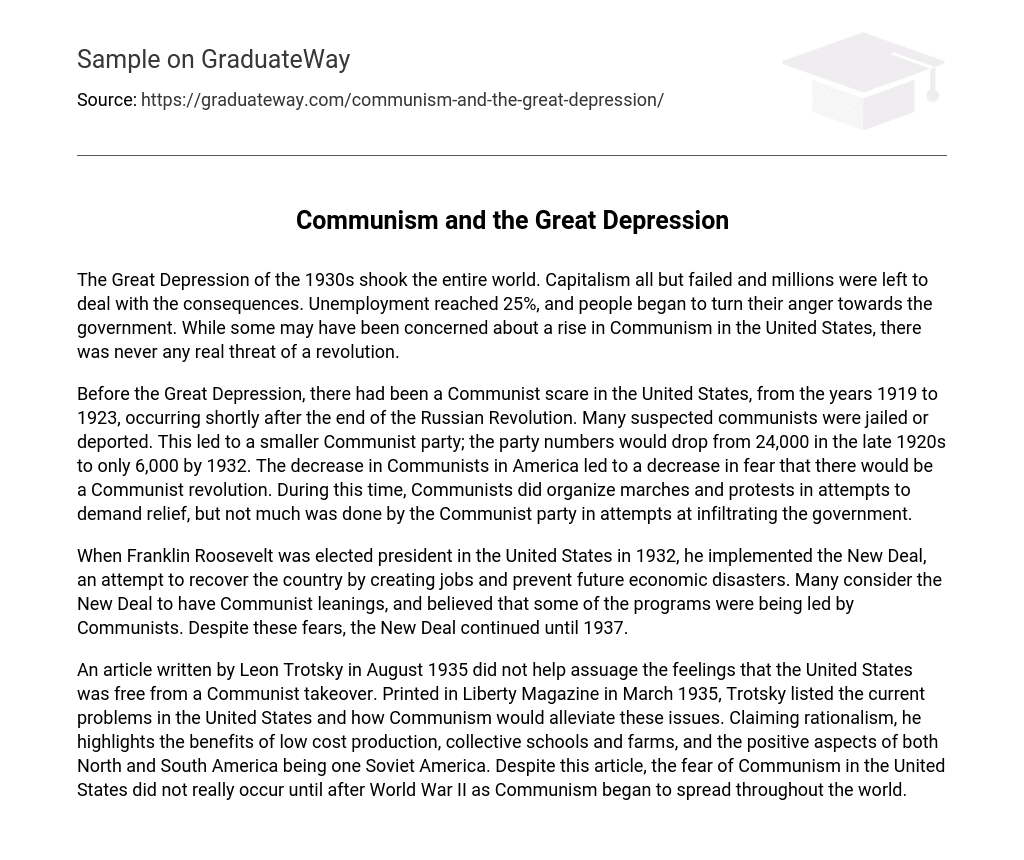The Great Depression of the 1930s shook the entire world. Capitalism all but failed and millions were left to deal with the consequences. Unemployment reached 25%, and people began to turn their anger towards the government. While some may have been concerned about a rise in Communism in the United States, there was never any real threat of a revolution.
Before the Great Depression, there had been a Communist scare in the United States, from the years 1919 to 1923, occurring shortly after the end of the Russian Revolution. Many suspected communists were jailed or deported. This led to a smaller Communist party; the party numbers would drop from 24,000 in the late 1920s to only 6,000 by 1932. The decrease in Communists in America led to a decrease in fear that there would be a Communist revolution. During this time, Communists did organize marches and protests in attempts to demand relief, but not much was done by the Communist party in attempts at infiltrating the government.
When Franklin Roosevelt was elected president in the United States in 1932, he implemented the New Deal, an attempt to recover the country by creating jobs and prevent future economic disasters. Many consider the New Deal to have Communist leanings, and believed that some of the programs were being led by Communists. Despite these fears, the New Deal continued until 1937.
An article written by Leon Trotsky in August 1935 did not help assuage the feelings that the United States was free from a Communist takeover. Printed in Liberty Magazine in March 1935, Trotsky listed the current problems in the United States and how Communism would alleviate these issues. Claiming rationalism, he highlights the benefits of low cost production, collective schools and farms, and the positive aspects of both North and South America being one Soviet America. Despite this article, the fear of Communism in the United States did not really occur until after World War II as Communism began to spread throughout the world.





